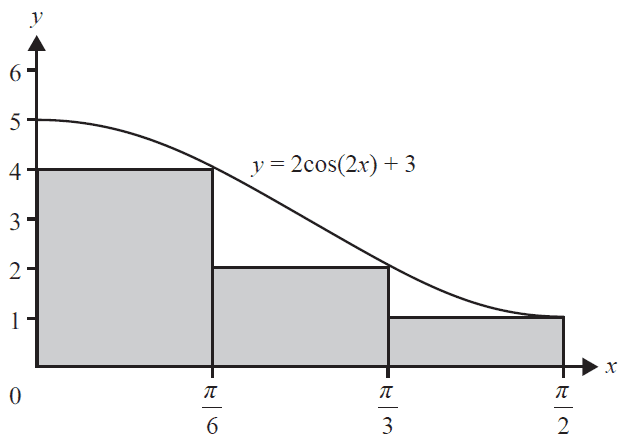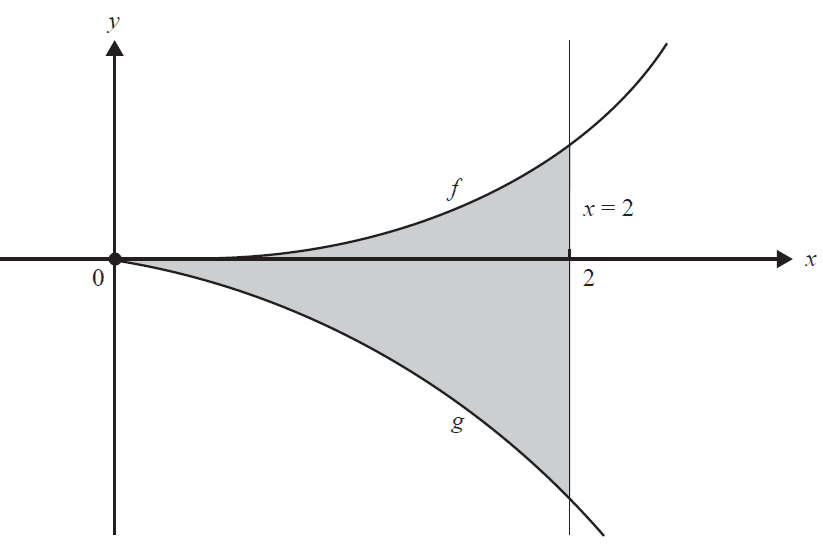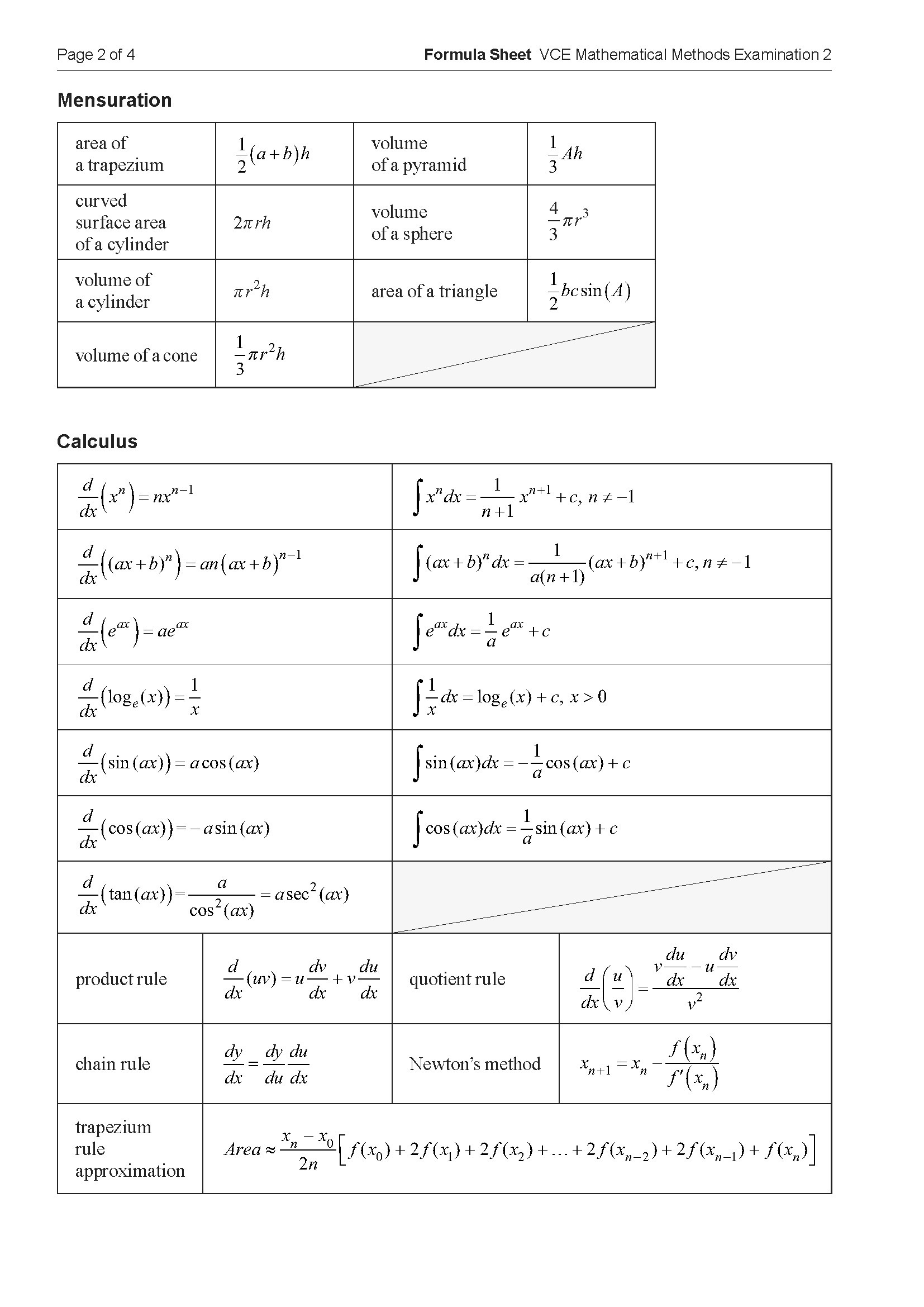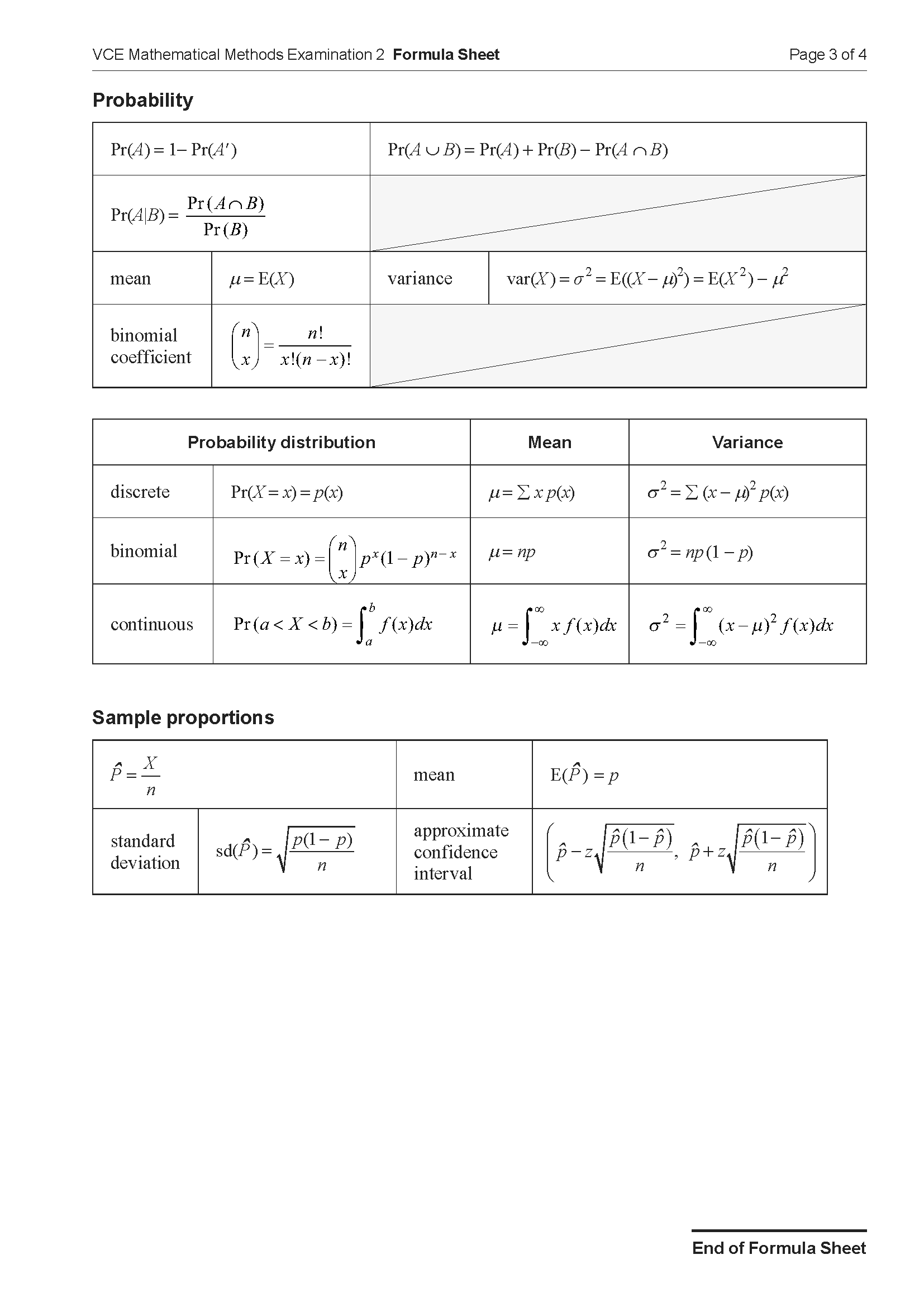2018 VCE Maths Methods Mini Test 9
Number of marks: 10
Reading time: 2 minutes
Writing time: 15 minutes
Section A – Calculator Allowed
Instructions
• Answer all questions in pencil on your Multiple-Choice Answer Sheet.
• Choose the response that is correct for the question.
• A correct answer scores 1; an incorrect answer scores 0.
• Marks will not be deducted for incorrect answers.
• No marks will be given if more than one answer is completed for any question.
• Unless otherwise indicated, the diagrams in this book are not drawn to scale.
Jamie approximates the area between the \(x\)-axis and the graph of \(y = 2\cos(2x) + 3\), over the interval \(\left[0, \frac{\pi}{2}\right]\) using the three rectangles shown below.

Jamie's approximation as a fraction of the exact area is
- A. \(\frac{5}{9}\)
- B. \(\frac{7}{9}\)
- C. \(\frac{9}{11}\)
- D. \(\frac{11}{18}\)
- E. \(\frac{7}{3}\)
The turning point of the parabola \(y = x^2 - 2bx + 1\) is closest to the origin when
- A. \(b=0\)
- B. \(b = -1\) or \(b=1\)
- C. \(b = -\frac{1}{\sqrt{2}}\) or \(b = \frac{1}{\sqrt{2}}\)
- D. \(b = \frac{1}{2}\) or \(b = -\frac{1}{2}\)
- E. \(b = \frac{1}{4}\) or \(b = -\frac{1}{4}\)
Consider the functions \(f:\mathbb{R}^+ \to \mathbb{R},\ f(x) = x^{\frac{p}{q}}\) and \(g:\mathbb{R}^+ \to \mathbb{R},\ g(x) = x^{\frac{m}{n}}\), where \(p, q, m\) and \(n\) are positive integers, and \(\frac{p}{q}\) and \(\frac{m}{n}\) are fractions in simplest form.
If \(\{x : f(x) > g(x)\} = (0, 1)\) and \(\{x : g(x) > f(x)\} = (1, \infty)\), which of the following must be false?
- A. \(q > n\) and \(p = m\)
- B. \(m > p\) and \(q = n\)
- C. \(pn < qm\)
- D. \(f'(c) = g'(c)\) for some \(c \in (0, 1)\)
- E. \(f'(d) = g'(d)\) for some \(d \in (1, \infty)\)
End of Section A
Section B – No Calculator
Instructions
• Answer all questions in the spaces provided.
• Write your responses in English.
• In questions where a numerical answer is required, an exact value must be given unless otherwise specified.
• In questions where more than one mark is available, appropriate working must be shown.
• Unless otherwise indicated, the diagrams in this book are not drawn to scale.
Let \( f: \mathbb{R} \rightarrow \mathbb{R}, f(x) = x^2e^{kx} \), where \(k\) is a positive real constant.
a. Show that \( f'(x) = xe^{kx}(kx + 2) \). 1 mark
b. Find the value of \(k\) for which the graphs of \( y = f(x) \) and \( y = f'(x) \) have exactly one point of intersection. 2 marks
Let \( g(x) = -\frac{2xe^{kx}}{k} \). The diagram below shows sections of the graphs of \(f\) and \(g\) for \(x \ge 0\).

Let \(A\) be the area of the region bounded by the curves \(y = f(x)\), \(y = g(x)\) and the line \(x = 2\).
c. Write down a definite integral that gives the value of \(A\). 1 mark
d. Using your result from part a., or otherwise, find the value of \(k\) such that \( A = \frac{16}{k} \). 3 marks
End of examination questions
VCE is a registered trademark of the VCAA. The VCAA does not endorse or make any warranties regarding this study resource. Past VCE exams and related content can be accessed directly at www.vcaa.vic.edu.au

